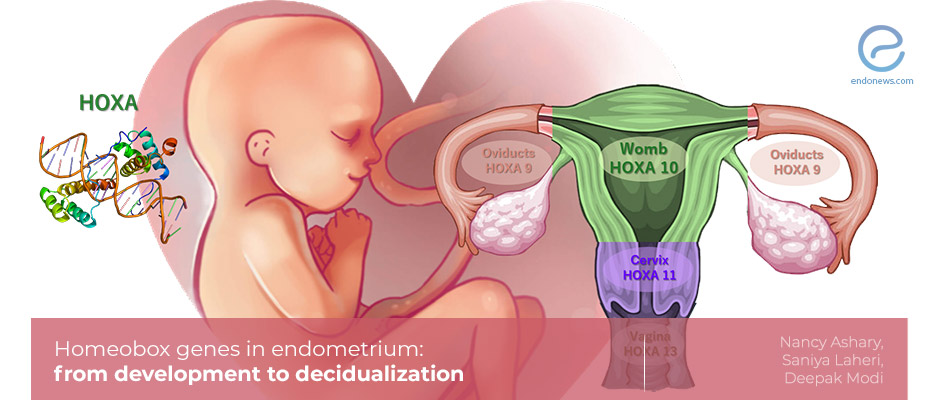Endometrium and HOXA 10 gene
Sep 10, 2020
HOXA10 expression is lower in the eutopic endometrium of women with endometriosis
Key Points
Highlights:
- HomeoboxA 10 (HOXA 10) is the master regulator of endometrial health and fertility in placental mammals.
- The alterations and deregulated expression of HOXA 10 may result in a variety of endometrial disorders such as endometriosis
Importance:
- The new understanding of the basic biology behind uterine development to decidualization and placentation will assist in the development of specific therapeutics for fertility management and the diseases arising in their abnormality.
What is done here:
- This is a review article on how developmental factor HOXA 10 emerges as the key player in its adult functions about endowing endometrial receptivity, embryo implantation, placentation, and regulating maternal immune tolerance for a successful pregnancy.
Key results:
- HOXA 10 was characterized to be the extraordinary regulator of the uterus that allows the structural segmentation to direct uterine development.
- HOXA 10 is known to function in the adult endometrium to regulate embryo implantation and early pregnancy.
- The downregulation of HOXA 10 expression in the endometria of women causes uterine abnormalities, unexplained infertility, and recurrent implantation failures.
- HOXA10 expression is lower in the eutopic endometrium of women with endometriosis, and it seems that infertility in endometriotic women is due to altered receptivity.
- Mice without Hoxa10 have features resembling human endometriosis.
Limitations of the study:
- The inability to perform genetic manipulations specifically in the endometrium before implantation, after the gain of receptivity.
- More studies are needed to clarify the association of HOXA 10 and endometrial pathologies and uterine disorder.
Lay Summary
Homeobox genes are transcription factors containing a conserved DNA sequence that encodes homeodomain which has a helix-loop-helix-turn structure. The homeodomain is responsible for recognizing and binding specific DNA sequences to regulate the expression of target genes. There are at least 39 HOX genes arranged in 4 clusters designated as HOXA, HOXB, HOXC, and HOXD in mice and humans. Hox gene expression is well characterized in the adult female reproductive tract.
Among the four HOX clusters, the HOX-A cluster is most abundantly expressed in the female reproductive tract. Moreover, HOXA 10 is well characterized for its expression in the adult endometrium. The human HOXA 10 is a sequence-specific transcription factor that binds to specific DNA sequences to regulate their transcription.
HOXA 10 is differentially expressed in the basal and functional layers of the mammalian endometrium, and in the myometrium. It is hypothesized that the zonal distribution of HOXA 10 enables specialized roles in the functional zone for implantation or menstruation. The zone-specific distribution of HOXA 10 may also create boundaries within the uterus for the implantation process.
HOXA 10 has emerged to be an extraordinary regulator of the uterus that allows the structural segmentation to specify the uterus during the development. In the adult endometrium, it regulates embryo implantation and early pregnancy. Mice without Hoxa10 have features resembling human endometriosis. HOXA10 expression is lower in the eutopic endometrium of women with endometriosis, and infertility in endometriotic women is probably due to altered receptivity.
The authors of the review paper entitled “Homeobox genes in endometrium: from development to decidualization”, published in the "The International Journal of Developmental Biology" concluded that that HOXA 10 is a molecular multitask protein that appears to be the master regulator of a range of activities from uterine segmentation to embryo implantation. Henceforth, based on the current evidence, the alterations and deregulated expression of HOXA 10 may result in a variety of endometrial disorders including endometriosis.
Research Source: https://pubmed.ncbi.nlm.nih.gov/32659011/
Homeobox HOXA10 decidualization Functionalis stratum basalis

